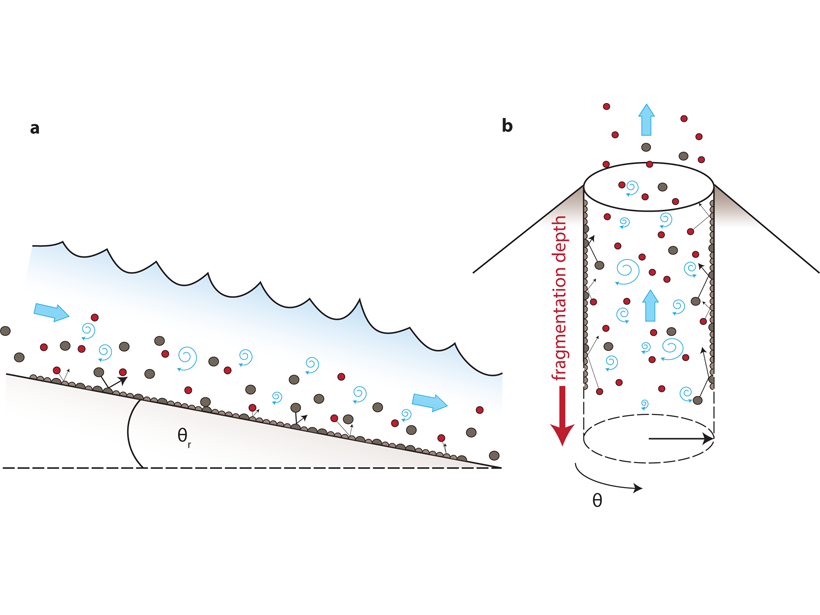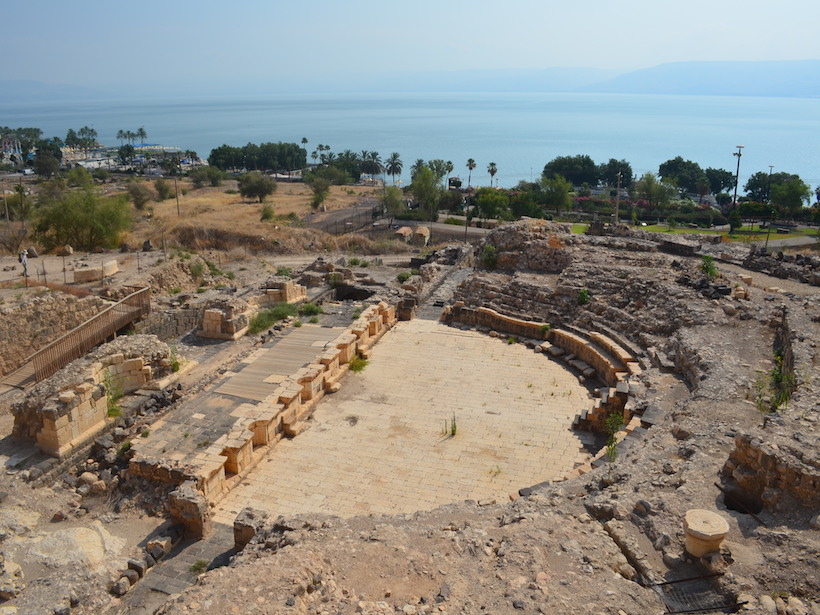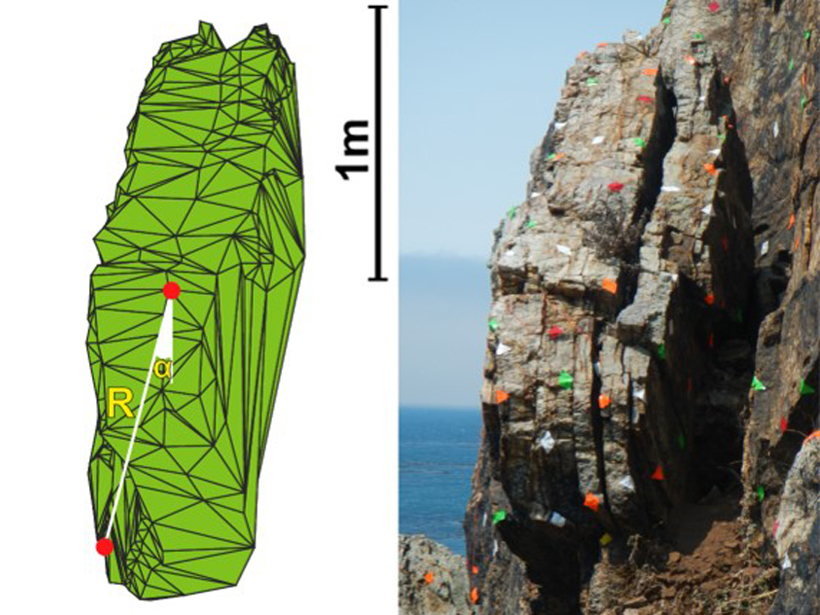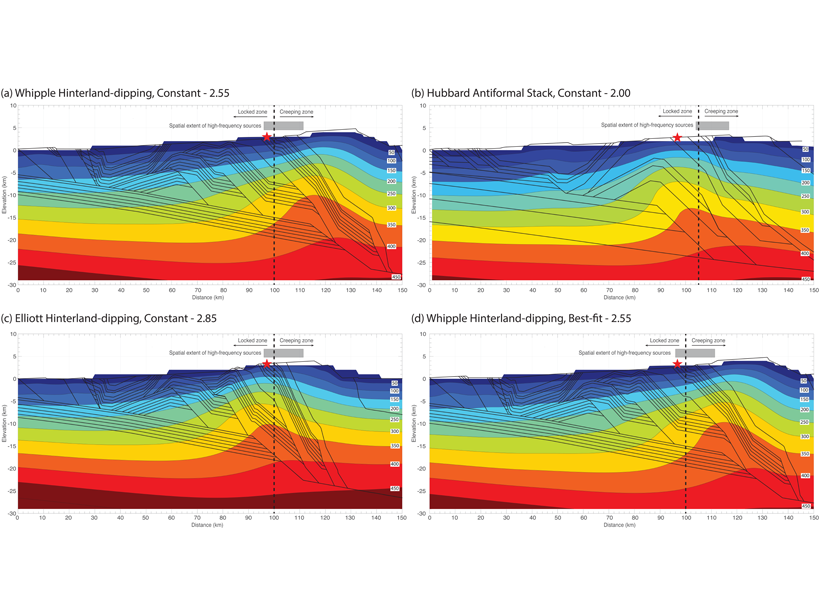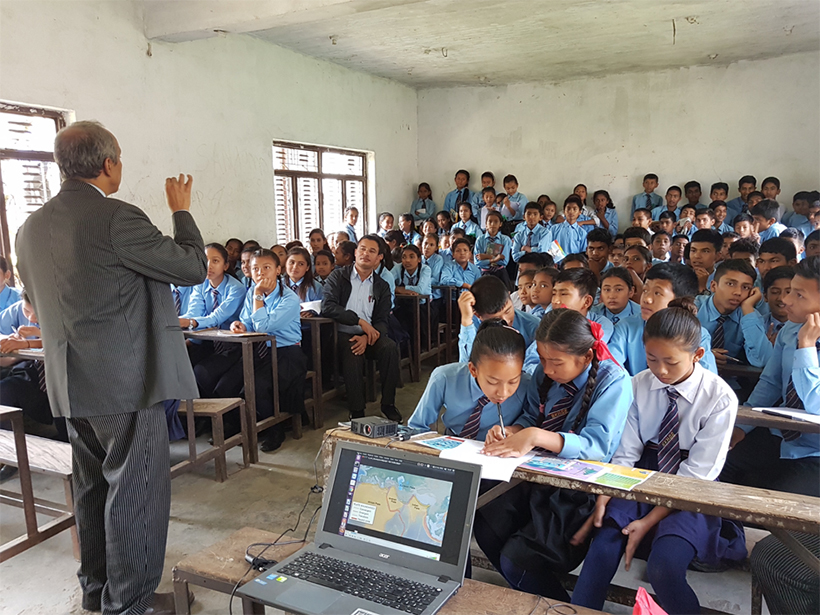Rock sliding experiments on meter scales show groove patterns which are controlled by normal stress. This may help better understand earthquake source conditions from exhumed faults.
earthquakes
What Controls Giant Subduction Earthquakes?
Subduction zones with a low dipping angle and thick sediments can produce giant earthquakes; this finding lets researchers estimate worst-case scenarios for coastlines around the world.
Eruption Seismic Tremor Modeled as a Fluvial Process
Impact and turbulence models for river tremor are adapted and combined into a model that predicts the amplitude and frequency content of volcanic eruption tremor.
Southern California’s Crustal Motion Tells of Earthquake Hazards
Precise measurements of the Earth’s vertical surface motion help to elucidate the hazards of faults in an earthquake-prone region.
Ancient Ruins Reveal 8th Century Earthquake in Sea of Galilee
Research into past seismic activity shows northeast Israel is still vulnerable to large quakes.
Earthquakes Reveal How Quickly the Ocean Is Warming
By timing sound waves set in motion by earthquakes, scientists have estimated that the Indian Ocean is warming by roughly 0.044 K per decade.
Earthquake Hazard Hanging in the Balance
Earthquake hazard calculations for California’s coast are refined with a view of precariously balanced rocks that would have fallen if the largest predicted shaking happened in the past 20,000 years.
Deconvolving What Lies Beneath the Himalaya
A new study that combines constraints from the 2015 Gorkha earthquake, forward models of deforming crust, and thermochronology data gives new insights into the structure of the Himalaya.
Trayendo la Educación Sobre Terremotos a las Escuelas de Nepal
El programa de Sismología en la Escuela en Nepal, tiene como objetivo preparar a las comunidades rurales para el próximo gran terremoto.
Kabuki Actor’s Forgotten Manuscript Yields Clues About 1855 Quake in Japan
Researchers analyzed a survivor’s account of the disaster to better understand future temblors.



